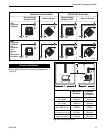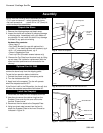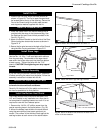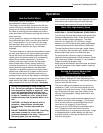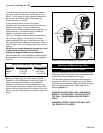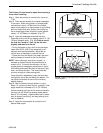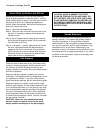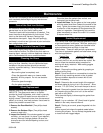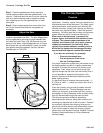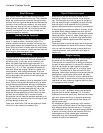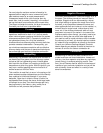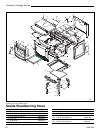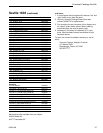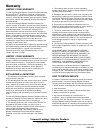
23
Vermont Castings Seville
30001490
Annual Maintenance
Perform a thorough cleaning, inspection and repair
each Spring, at the end of the heating season.
• Thoroughly clean the chimney and chimney connec-
tor.
• Inspect the chimney for damage and deterioration.
Replace weak sections of prefabricated chimney.
Have a mason make repairs to a masonry chimney.
• Inspect the chimney connector and replace any
damaged sections.
• Clean ash debris from under the primary air plate.
See procedure below.
• Check gasketing for wear or compression, and
replace if necessary. A 'paper test' will guide you on
this. Close and lock the door on a slip of paper and
then try to pull the paper out. If the paper pulls out
with little or no resistance, the gasket isn't snug
enough at that spot. If adjusting the latch doesn't
result in a seal that makes it hard to pull the paper
out, replace the gasketing.
• Check door handle for tightness. Adjust if needed.
• Check heat shield screws. Tighten as necessary.
• Clean dust from the inner sides of bottom, rear and
connector heat shields.
• Remove ashes from the ash pan and replace with
moisture absorbing material (such as cat litter) to
keep the stove interior dry. Close the stove door to
keep cats from using the litter.
•Touch up the paint on black stoves.
Clean the Primary Air Outlet
1. Remove the phillips head screws that retain the
Primary Air Plate.
2. Use a screwdriver to pry the plate out of the ce-
mented seams.
3. Remove ash debris from the cavity.
4. Use high-temperature furnace cement to reseal the
front seam and side seams and replace the plate.
Secure with the phillips head screws.
Draft Management
Your stove is only one part of a system that includes
the chimney, the operator, the fuel and the home. The
other parts of the system will affect how well the stove
works. When there is a good match between all the
parts, the stove works well.
Wood stove operation depends on natural (unforced)
draft. Natural draft occurs when exhaust gas is hotter
(and therefore lighter) than the outdoor air at the top of
the chimney. The greater the temperature difference,
the stronger the draft. As the hot exhaust gas rises out
of the chimney it generates suction that draws air into
the stove for combustion. A slow, lazy fire with the
stove’s air inlets fully open indicates a weak draft. A
brisk fire, supported only by air entering the stove
through the normal inlets, indicates a good draft. The
inlets are passive; they regulate how much air can
enter the stove, but they do not move air into it.
The efficiency of a modern woodburning appliance, (in
which the amount of air available for combustion is
regulated), depends on the chimney to keep exhaust
gases warm all the way outdoors. The characteristics
of your chimney - whether it is steel or masonry,
interior or exterior, matched or mismatched to the stove
collar - determine how quickly it will warm up and how
well it will sustain the optimum temperatures necessary
to maintain strong draft and efficient combustion. Here
follows a description of various flue system character-
istics and related effects on stove performance.
Masonry Chimney
Although masonry is the traditional material used for
chimney construction, it can have distinct performance
disadvantages when used to vent a controlled-combus-
tion woodstove. Masonry forms an effective ‘heat sink’
- that is, it absorbs and holds heat for long periods of
time. The large mass, however, may take a long time
to become hot enough to sustain a strong draft. The
larger the chimney (in total mass), the longer it will take
to warm up. Cold masonry will actually cool exhaust
gases enough to diminish draft strength. This problem
is compounded if the chimney is located outside the
home or if the chimney flue has a cross-sectional size
larger than the stove outlet.



